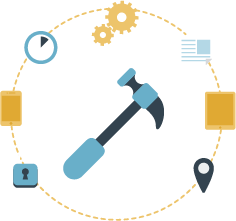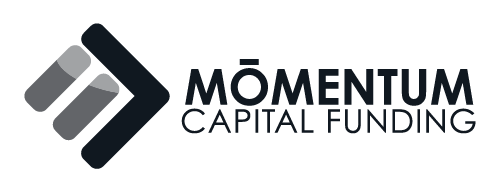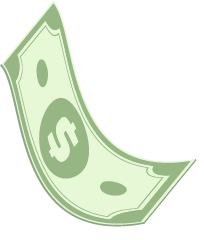Table of Contents
What is cash flow?

ELEMENTS OF
CASH FLOW

Positive Cash Flow
This happens when the cash entering your business (sales, accounts receivables, etc.) exceeds the amounts of cash exiting (through accounts payable, monthly expenses, salaries, etc.). A positive cash flow means there is more cash entering your business than exiting your business. You always want your business to have a positive cash flow.
This happens when your cash outflow is greater than the cash inflow. This is highly problematic for your business, and you should take immediate action to create positive cash flow.
Negative Cash Flow

Cash flow is comprised of three basic components

Operating Activities:
Production, sales, delivery of your business’s product and collected payments from your customers. Cash flow from operating activities shows how much cash your business has generated from its operating activities.

Investing Activities:
Purchase of assets (equipment, building, land, etc.), payments related to mergers or acquisitions, and loans made to suppliers or received from customers. Investing activities demonstrate how much money your business has spent on investments.

Financing Activities:
Cash coming from investors (bank or shareholders). This could include the sale of stock, repurchase of company stock, repayment of debt or payment of dividends. This shows how much of your cash flow is generated from financing activities based on the transactions your business has with its owner or debtors.
Cash Flow vs. Profit:
What’s the difference?
While cash flow describes the movement of money into and out of your business, profit is the surplus of money your business has after you’ve subtracted the revenue from your expenses.
Cash flow is more dynamic in concept – as it measures the movement of money – than profit, which simply demonstrates how much money you have left over after your expenses have been deducted. Even a profitable business can fail if a business doesn’t have a healthy cash flow.
What cash flow can tell you about your business:
 How your business gets its cash
How your business gets its cash
 How your business spends its cash
How your business spends its cash
 If your company generates enough cash flow to keep your business open and pay for operation costs
If your company generates enough cash flow to keep your business open and pay for operation costs
 How to balance investments based on your cash flow cycle
How to balance investments based on your cash flow cycle
 If your company has enough cash to pay off existing debts
If your company has enough cash to pay off existing debts
Many successful companies (like Amazon, Twitter, Uber and Yelp) actually existed a long time without profits, but no company can survive without a healthy cash flow. For small to mid-sized businesses, profit is still important, but cash flow is vital. If you don’t have cash on hand, you can’t pay for your business’s basic needs like rent, employee salaries, electricity or equipment. If you don’t have enough cash on hand to replenish inventory or pay operating expenses, you will become unable to generate new sales. If you can’t afford operating expenses, you will eventually fail. That’s why cash flow is such an accurate predictor of a business’s success.
The consequences of weak cash flow
Many profitable businesses fail because they don’t have enough cash coming into their business to make up for the amount of cash flowing out. Without a healthy cash flow businesses can’t remain open.
Determining your
business’s cash flow



Businesses determine their cash flow with a cash flow statement: Your cash flow statement is a financial statement that shows how much cash is flowing into and out of your business and demonstrates both the operating results and the changes in your balance sheet and income statement. You should be tracking this regularly, whether it’s weekly, monthly or quarterly.
You can create a basic cash flow projection for your business by doing the following:
 Create a comprehensive list of your account payables.
Create a comprehensive list of your account payables.
Create a list of payments you will need to make for the next term. You’ll need to know when and on what you will be spending money. Estimate the cost for each of these payments. Examples: stock, equipment costs, wages, rent, loan repayments and taxes.
 Total your account receivables.
Total your account receivables.
Estimate the amount of money you will receive. List what money will be coming into your business. You need to determine how many and what sources you will receive money from and when you can reasonably expect that money. Examples: customer payments, interest on savings and tax returns.
 Subtract your account payables from your account receivables.
Subtract your account payables from your account receivables.
This figure will show you how much money you will have at the end of the term.
There are a number of templates for cash flow projection spreadsheets you can find online if you don’t want to create your own.
What to learn more?
How to create a basic cash-flow projection for your business
Improving your business’s cash flow
You can improve your business’s cash flow by:
Protecting your cash flow
Review your cash flow statement and create a 12-month forecast to map your business’s future. Use it to guide your financial moves in the future.

Collecting your receivables effectively
It’s important to have a good money collection system in place and keep your payment terms as short as possible to get paid quickly by your customers. Having a working payment policy will improve the speed with which cash enters you business.

Discounting your prices in return for fast payment
You can try offering discounts to customers if they pay their bills quickly.

Lengthening your payables
Work with your vendors to extend the amount of time your business has to make your payables. Doing so will give you more time to collect money from your own clients before you pay your vendors, which will improve your cash flow.

Increasing Sales
Attracting new customers and selling additional goods or service to your existing customers is a no brainer for increasing the amount of cash entering your business.

Reducing overhead spending
Save your precious cash and reduce your outflow of cash by cutting services that aren’t necessary for your busniness. For services you can’t cut, try to negotiate a better deal.

What can a small business owner do if they lack cash flow?
For companies who don’t have enough cash flow to sustain their business, infusing your business with additonal cash is often the fastest way to improve cash flow. There are a number of financing options that will provide your business with the needed funding.
What to learn more?

Financing
If you don’t have enough cash to grow or maintain your operating fees, consider infusing your cash flow with outside financing.
Financing options for businesses needing additional working capital
Personal Investment: For this option, small business owners use their personal savings or assets to fund their businesses. Although this means of funding is often readily available, personal investment can pose an extreme financial risk for the owner.
Personal Investment: For this option, small business owners use their personal savings or assets to fund their businesses. Although this means of funding is often readily available, personal investment can pose an extreme financial risk for the owner.
Commercial Loans: Banks and credit unions provide commercial loans for small businesses, providing cash to owners. The business owner must then pay the money back to the bank or credit union with interest over a period of time. Typically, collateral must be given for the loan. This can be difficult for small businesses, and especially problematic for new businesses, to provide if they have an insufficient credit history or little revenue. Personal guarantees are also often required, meaning small business owners must pay the loan from their personal assets if the business is unable to pay the loan.
Commercial Loans: Banks and credit unions provide commercial loans for small businesses, providing cash to owners. The business owner must then pay the money back to the bank or credit union with interest over a period of time. Typically, collateral must be given for the loan. This can be difficult for small businesses, and especially problematic for new businesses, to provide if they have insufficient revenue or credit history. Personal guarantees are also often required, meaning small business owners must pay the loan from their personal assets if the business is unable to pay the loan.
Community Banks: Community bank loans are a popular option because many offer low interest rates and often have higher approval rates than large banks. Although this is an attractive option, community banks often reject small business loans, particularly for new companies.
Community Banks: Community bank loans are a popular option because many offer low interest rates and often have higher approval rates than large banks. Although this is an attractive option, community banks often reject small business loans, particularly for new companies.
Angel Investor: Angel investors typically invest in a given company they believe shows potential. Finding angel investors can be somewhat tricky, as this type of investing poses a number of risks for the investor.
Angel Investor: Angel investors typically invest in a given company they believe shows potential. Finding angel investors can be somewhat tricky, as this type of investing poses a number of risks for the investor.
Government Programs: A number of government programs exist to help fund small new and expanding businesses on the federal, state and local level, with the Small Business Administration (SBA) being the largest federal funding source for small businesses. Although SBA directly issues SBA loans, the majority of SBA loans are administered by commercial lenders and the commercial loan is then guaranteed by the federal government, which allows commercial lenders to give loans to small businesses that may not qualify under a private loan program. Researching what government financing programs are available in your state or city can be fruitful for small or new business owners.
Government Programs: A number of government programs exist to help fund small new and expanding businesses on the federal, state and local level, with the Small Business Administration (SBA) being the largest federal funding source for small businesses. Although SBA directly issues SBA loans, the majority of SBA loans are administered by commercial lenders and the commercial loan is then guaranteed by the federal government, which allows commercial lenders to give loans to small businesses that may not qualify under a private loan program. Researching what government financing programs are available in your state or city can be fruitful for small or new business owners.
Accounts Receivable Financing: This option provides businesses with immediate financing regardless of the business’s credit ceiling. This makes factoring a helpful option for businesses too new for traditional financing, companies experiencing sudden growth and companies who need additional capital to take advantage of immediate opportunities. It is thus a popular option for blue-collar entrepreneurs.
What to learn more?









